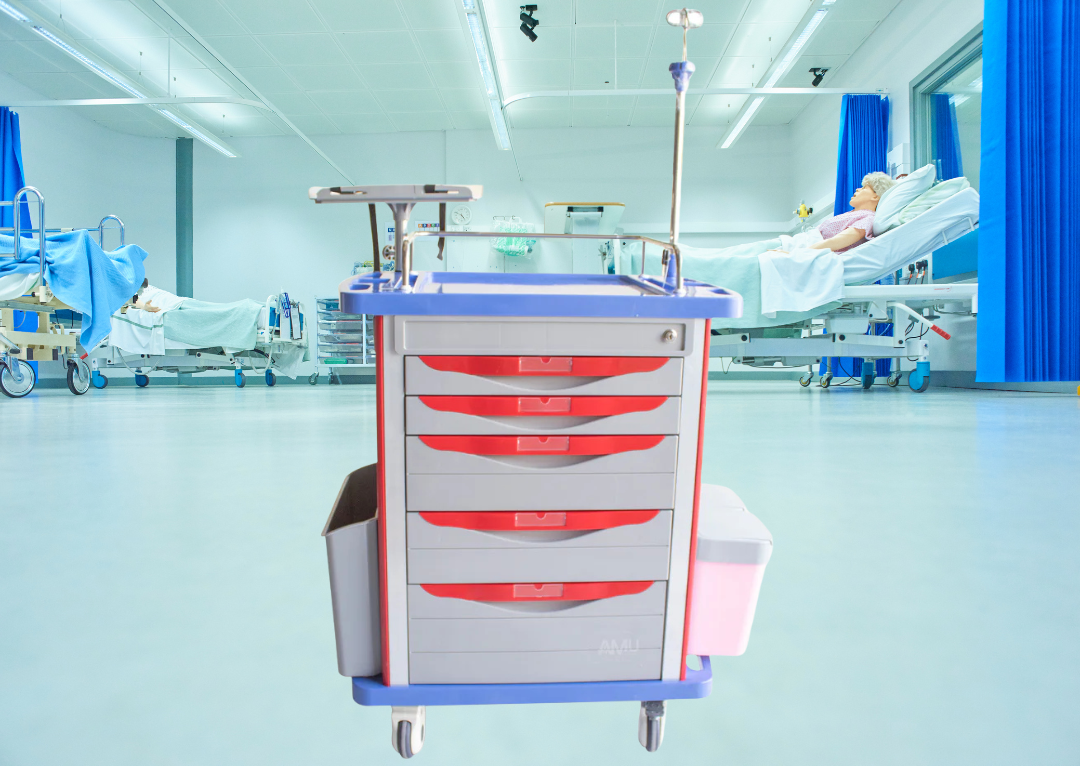Often seen as a blur and heard as a series of squeaks, a crash cart is one of the most critical pieces of emergency equipment typically stored in hospitals, ambulances and clinics where life or death situations can occur.
Like a lot of pieces of emergency equipment, however, the crash trolley is often relied upon, but to a degree, also taken for granted without a full appreciation for how many lives it has saved and the degree to which it has managed to change accident and emergency care.
To redress that balance, here is an exploration of how crash carts have contributed to emergency care, starting by answering the simple question of what a crash cart even is.
What Is A Crash Cart?
Whilst a crash cart is designed to be very quickly wheeled up and down cleared corridors and take a few bumps and jolts along the way, the term crash in a medical context is used to refer to a patient who has rapidly deteriorating symptoms, such as those caused by acute heart failure.
It is also known as a code cart or resus trolley, referring to a medical code red scenario (code blue in some medical jurisdictions), which signifies trauma protocol or rapid response situations.
It is also known as a crisis cart or a MAX cart, the latter a nickname given to it by the United States Emergency Care Research Institute, in part because it maximises the chances of saving a patient’s life.
What Is Stored In A Crash Cart?
As a wheeled cabinet with a series of trays and a surface for placing medical equipment, the crash trolley can vary considerably in terms of the equipment it has. Even different departments of a hospital may have a slightly different set of medications stored within them.
However, much like a medical bag, there are some common pieces of equipment and drugs that are stored alongside facility-specific choices. These can include:
-
Defibrillators, bag valve masks and monitors for handling cardiac arrest.
-
Electronic metronome for CPR.
-
Lidocaine and other drugs that are needed as part of Advanced Life Support (ALS).
-
First line, time-critical drugs for common life-threatening conditions such as naloxone (for opiate overdose), dextrose (for hypoglycaemic shock), and nitroglycerine.
-
Rapid sequence intubation medications such as sedatives, paralytics and anaesthesia drugs.
-
Drugs for venous access.
-
Paediatric equipment, particularly for children’s wards and A&E facilities.
Many crash trolleys can vary considerably, and if there are specific medical dangers or expected emergencies, certain medical supplies will also be included.
Who Invented The Crash Cart?
Notwithstanding any makeshift wheeled storage or equipment on casters, the first crash cart was the somewhat large MAX cart invented by Dr Joel Nobel.
Unlike modern designs, it was designed for a patient to lie on in the event of a cardiac arrest or other cardiopulmonary event, and contained everything that an emergency doctor would need to restart a heart, stem haemorrhagic bleeding and save lives.
Around the same time, emergency nurse Anita Dorr developed a much closer analogue to the modern crash cart, which provided supplies and equipment that could be rushed to the side of someone suffering a life-threatening emergency.

